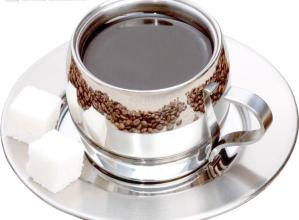The function of price characteristics of Arabica coffee
The function of price characteristics of Arabica coffee
Arabica coffee accounts for 75% of the world's coffee output, and the quality of Arabica coffee varies greatly, from good to bad. In recent years, a few countries (such as India) have devoted themselves to improving the quality of robusta coffee. They have planted robusta in high altitude areas, given the most careful care, and carefully washed the coffee. As a result, they have got very high-quality robusta coffee beans! Top Robusta beans are not cheap either, getting rid of the old impression that Robusta are cheap beans! So the quality of coffee beans is no longer good or bad. Is it Arabica beans? To judge by this crude and outdated ancient standard of judgment.
"SL28" and "SL24" is a bourbon line screened and cultivated by French and British missionaries and researchers in Kenya at the beginning of the 20th century. For a hundred years, it has adapted to the high concentration of phosphate soil in Kenya, and the Kenyan bean has a special sour aura, which is different from the bourbon bean in Central and South America. However, after it was transplanted to Asia, it lost its flavor and could not show their characteristics.
Arabica? Coffee has a varied and broad potential flavor. Arabica coffee produced in different regions, different elevations and different climates usually has its own characteristics and can show a completely different flavor. ? Arabica? When coffee is not roasted, it smells like grass. After proper roasting, it shows. Fruity? (medium and shallow baking) and? Caramel sweet? (deep baking), generally speaking, has a better aroma and flavor than Robota beans. ? Robusta? Coffee is usually mundane, dull, and pungent, and because the vast majority of Robusta coffee in the world is grown in low altitude areas (India has planted a small number of high-altitude, high-quality, washed robusta coffee beans, its price is higher than most Arabica coffee beans) the flavor produced by different regions and climates does not vary much, and lacks personality. When unbaked, it smells like raw peanuts, and cheap robusta coffee beans usually smell like peanuts when roasted. Mai Tsai tea? (medium baking) and? The smell of rubber tires? (deep baking), it is difficult to show fine flavor.

Important Notice :
前街咖啡 FrontStreet Coffee has moved to new addredd:
FrontStreet Coffee Address: 315,Donghua East Road,GuangZhou
Tel:020 38364473
- Prev

Analysis of domestic Coffee consumption habits: who is the largest Consumer Group
It has gradually become a consumption trend for brands to join cafes. In the choice of places and drinks, brand chain cafes are still the mainstream of consumption, accounting for 45% of the choice of places. And boutique cafes are also strong, 40%, some foreign coffee brands such as Caffe pascucci, Costa have entered China one after another. There can be no less atmosphere and taste. Paying attention to the cafe.
- Next

Description of the characteristic Flavor of Cappuccino Coffee introduction to the grinding scale of taste treatment
Cappuccino Coffee characteristic Flavor description Taste treatment method Grinding scale introduction to the production method of Oulei iced coffee (for two): 1. Add 16g coffee powder and 260cc water to Italian steam to get espresso. two。 You can also get espresso by brewing 40g coffee powder (non-Italian brewing utensils) with 120cc water. First add the appropriate sugar to the espresso, and then prepare two
Related
- Beginners will see the "Coffee pull flower" guide!
- What is the difference between ice blog purified milk and ordinary milk coffee?
- Why is the Philippines the largest producer of crops in Liberia?
- For coffee extraction, should the fine powder be retained?
- How does extracted espresso fill pressed powder? How much strength does it take to press the powder?
- How to make jasmine cold extract coffee? Is the jasmine + latte good?
- Will this little toy really make the coffee taste better? How does Lily Drip affect coffee extraction?
- Will the action of slapping the filter cup also affect coffee extraction?
- What's the difference between powder-to-water ratio and powder-to-liquid ratio?
- What is the Ethiopian local species? What does it have to do with Heirloom native species?

